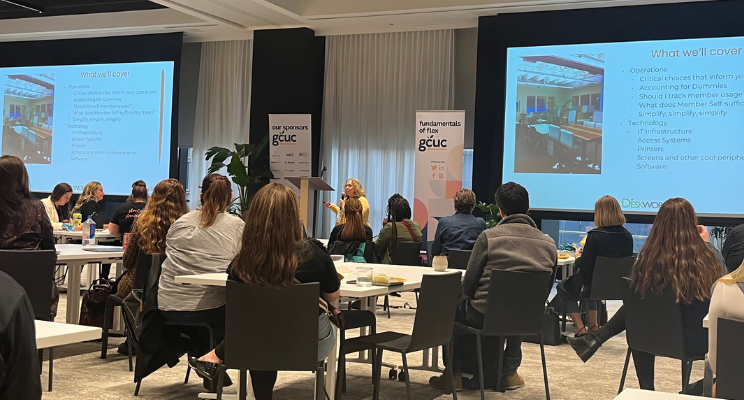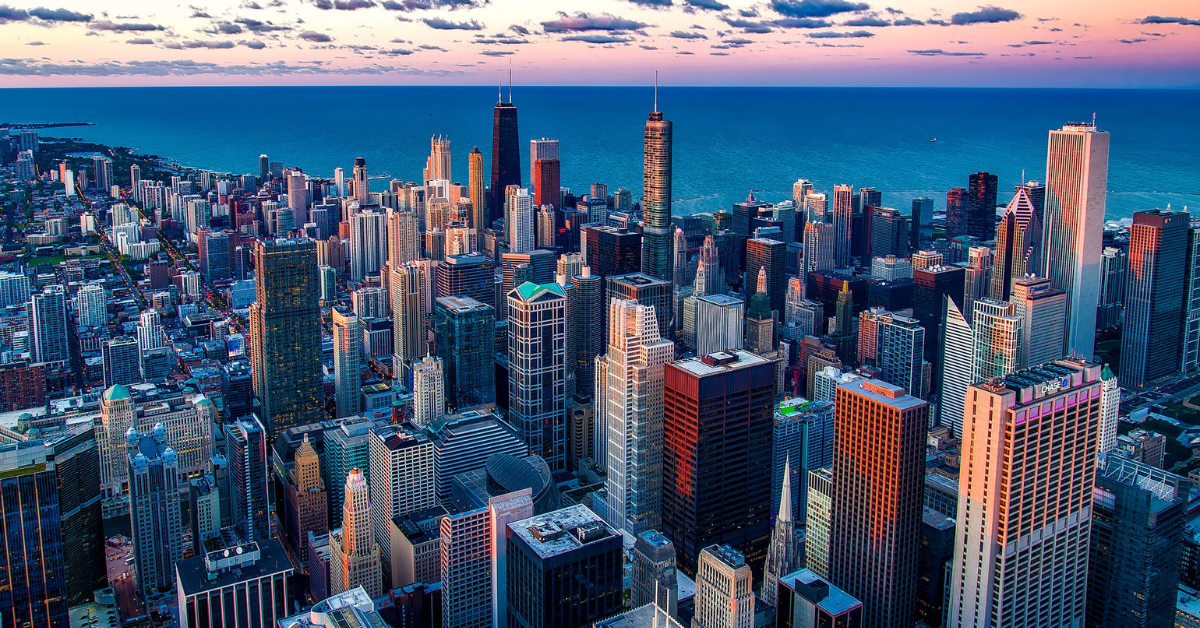How to Create a Green, Sustainable Shared Workspace: 13 ProTips

Creating a green, sustainable shared workspace is good for the environment. It can also be good for the bottom line. Energy and waste reduction strategies can be affordable to implement, products are easy to find, and they can help space operators save money in the long run.
As Deskworks founder and CEO Barbara Sprenger explains, “When people hear green, they’re usually thinking it will cost them more money. It’s just not true. Green can frequently mean less expensive.”
Sprenger and the Satellite Workplace team started the company with an environmental motive. “We were trying to reduce commutes and resultant CO2 emissions by creating the Satellite close to where people live,” she explains, adding, “Coworking spaces that serve their local area are green by definition.”
Here are 13 tips to make your coworking space, business center or shared workspace more sustainable.
1. Reduce Water Use
To reduce water usage in your workspace, add low-flow aerators to your sinks. These restrict the water flow and reduce usage by half with no loss of efficiency. Use low water flow toilets which use 20 percent of the water used by older toilets. Wait until the dishwasher is full to run it.
2. Rethink Your Paper Products
Use recycled paper in your printer and copier. Use recycled paper towels, if you use paper towels, at all. Use recycled, septic-safe toilet paper. These are all easy to find and available in bulk at about the same price (and sometimes less) than the less environmentally responsible alternatives.
3. Get the Right Lights
Install motion sensors on your lighting. Typically the motion sensor is incorporated into the light switch. This will significantly reduce your electric bill. Use LED lights. They use a very small percentage of the old incandescent bulbs, they’re affordable, you can get them in a range of colors, and they last up to 20 years.
If you’re doing a new build-out of a workspace, focus on daylighting, which is the illumination of the interior with natural light. This can be done with clerestory windows, skylights and sun tunnels that channel natural light into your space.
Indoor lighting is one of the single largest consumers of energy. In California, all new buildings are required to have switching or control capabilities to allow lights to be turned off when they are not needed. Green lighting control practices that can be done anywhere include: putting light switches or controls in each room; installing motion-sensing occupant sensors in offices, meeting rooms and multi-use areas; and installing occupant sensors in hallways and stairwells.
4. Go Low VOC
Paints and building materials contain Volatile Organic Compounds (VOC). Choose low VOC paints and products to keep harmful pollutants out of your space. Low VOC paints are now the same price and quality as more toxic alternatives. When possible, choose low VOC carpet, as well, though these are still more expensive.
5. Be Bike Friendly
Help members reduce their carbon footprint by providing a safe place for them to store their bikes. While bike racks outside of your space are a step in the right direction, an area within the space gives an added level of security. You can also offer a shower room to encourage people to bike to your space.
6. Clean Green
Green cleaning supplies are affordable, easy to find, and better for your members and the planet than toxic products. Use natural cleaning supplies in your space for wiping down counters and tables, doing the dishes, mopping floors and cleaning the bathrooms.
7. Green the Air with Plants
Indoor spaces can contain a variety of pollutants and irritants, such as formaldehyde, mold, bacteria, pollen and even car exhaust. NASA did a deep research dive into using plants to improve air quality and discovered that it works. Here are five air improving plants to put in your shared workspace.
- Spider Plant
- Dracaena
- Ficus
- Boston Fern
- Snake Plant
8. Recycle, Recycle, Recycle
Recycling should go without saying, but many offices and buildings still do not make it easy. Create a culture of recycling by making it convenient for members to put cans, bottles, paper, packaging, cardboard boxes and more in a recycling can or area rather than a garbage bin with contents destined for the landfill.
Deskworks is workspace software designed by space operators to save time and money. Request a free demo.
9. Get Smart About Flatware
Ditch the disposable cups, plates and flatware in your space and invest in real, reusable ones like you have at home. You’ll save tons of money in the long haul, eliminate the time and energy taken to inventory, order and stock disposable goods, and you’ll give your workspace a sense of home rather than a fast food joint.
10. Cut the Plastic
Whenever possible, reduce or eliminate the use of plastic in your space. You’ll help protect our natural environment and the animals in it. As Sprenger puts it, “Every bit of plastic you don’t use saves the Pacific Gyre.”
11. Consider Solar
Solar energy can greatly reduce energy consumption and save you money. There’s an upfront cost but it pays off over time. The challenge of installing solar on a commercial space is the financing: Who pays for it? The landlord? The tenant? Can it be paid off on a monthly basis? Does it make sense for a tenant to pay for it? If you have a green-minded landlord, you may be able to negotiate a solar strategy for your workspace that works for everyone.
12. Leverage Local Resources
There are a growing number of green building resources you can use to make your shared workspace more sustainable. Look online for a government agency or nonprofit in your area that is responsible for supporting green building. They’ll be able to provide information and resources.
Contact your local energy provider to find out about rebate and credit programs for installing energy efficient devices. Note: Rebate programs offered by government supported monopolies, such as PG&E, are often structured in a way that’s confusing and complicated. They’re not as simple as they could be, but don’t let that be a deterrent. They usually have a live person responsible for helping you navigate the process.
13. We Can Help
The Deskworks team, which has built out seven shared workspaces, now provides consultation for creating a green, sustainable workplace or coworking space. If you have questions, concerns or need help getting started, contact us. We can help.
Deskworks is workspace software designed by space operators to save time and money. Request a free demo.
Subscribe to our monthly newsletter to receive new feature announcements, tips for space operators and industry news.
[contact-form-7 id=”5131″ title=”Newsletter Sign Up Blog”]





